|
MEANINGFUL INTERPRETATION How To Connect Hearts And Minds To Places, Objects, And Other Resources |
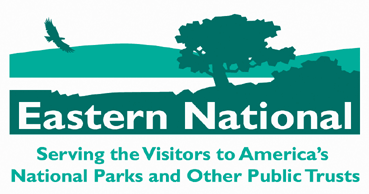
|
|
"PO-WA-HA...WHICH MEANS 'EVERY OBJECT HAS BREATH.'" —Museum of the American Indian
|
LINKING A TANGIBLE TO AN INTANGIBLE
Journal Questions:
What object best represents the meanings of your site for you? Why?
| ASSIGNMENT |
|
See Part 6 of the video, Linking a Tangible to an Intangible, or read Section Five of the text, An Interpretive Dialogue. |
Resources are made up of tangible objects, places, people, and events as well as the intangible meanings to which each is linked. To neglect one is to squander the power of both.
Intangible meanings include, among others: systems, processes, relationships, feelings, values, ideas, and beliefs. Just as parks, refuges, museums, nature centers, forests, and battlefields can be viewed as icons that connect to intangible meanings, so can any of their parts — flora, fauna, furniture, and landscape.
All successful interpretation can be described as linking a tangible resource to its intangible meanings. Effective interpretation is about connecting one to the other — tangibles and intangibles exist together.
|
"WILDERNESS IS TWO THINGS: FACT AND FEELING. IT IS A FUND OF KNOWLEDGE AND A SPRING OF INFLUENCE. IT IS THE ULTIMATE SOURCE OF HEALTH — TERRESTRIAL AND HUMAN." —Benton Mackaye
|
EXAMPLE 1
(Field interpreters during interpretive writing courses wrote all examples.)
A Spirited Salmon
Mary Price, U.S. Fish and Wildlife Service
The sockeye are back — and she is almost home.
 SOCKEYE SALMON: U.S. FISH AND WILDLIFE SERVICE, WASHINGTON DC LIBRARY |
After a remarkable two-year odyssey and thousands of ocean miles, the salmon returns to the river of her birth, heavy with eggs. As she swims she doesn't notice the small city she passes.
She doesn't know the people are there because she is there. Her ancestors nourished their ancestors through a succession of cultures and trade systems.
Many human generations fought for control of her kind and through the fish, the land itself.
She is unaware of the long odds against her. Predators seek her every minute. Over ninety percent of her brothers and sisters have been eaten. So far she's survived. But her journey is not over.
In the milky blue water of the glacially fed river she can feel the press of other salmon. She's a social creature and has spent her life in a comforting crowd. Suddenly, she feels a flash of pain as a barbed hook bites into her jaw. Pain helps her detect and usually avoid harm, but this time it's different. She reacts with might, fighting for escape with an already limited and dwindling supply of energy.
 SOCKEYE SALMON: U.S. FISH AND WILDLIFE SERVICE, WASHINGTON DC LIBRARY |
She is dragged onto the gravel bar where she continues a futile struggle, flopping heavily on the rocks, her now helpless body bruised and scraped with each convulsion. She's stunned by a thump on the head and tossed up on the bank to drown slowly in a sea of air. She lies there, encrusted in dirt, leaves, and grass, particles of course sand ground into her unblinking eyes, silently enduring her torturous death.
Would it be different if she could cry or shriek?
It's a huge thrill to hook a salmon, eight pounds of pure muscle and resistance, the essence of the struggle for life clearly transmitted through the taut fishing line. Yet when I land a salmon I feel an internal conflict. Joyous of my success, I also know I'm responsible for extinguishing the life I hold in my hands. The salmon is a gift from nature. After a hard knock on the head, I cut the gills. The rapid bleeding ensures a quick death and empties the flesh of stagnant blood.
When I leave, I see small piles of salmon on the bank behind groups of fishermen. There's a last futile flip of a doomed tail here and there. In my mind I apologize for their unkind passing. I hope they won't be wasted. I want their sacrifice to have meaning.
I gaze into the opaque turquoise waters, unable to see and yet visualize the living waves of salmon rippling onward up the river to their spawning grounds — their home. Here, finally, the successful few will deposit their tiny translucent orange globes. Each a promise of a new life...for the salmon, the river, and us.
What tangible resources does the author want you to care more about? There may be several.
What tangible icon does the author use a focus or vehicle to explore intangible meanings?
What intangible meanings does the essay link to the tangible? There are no wrong answers as the essay conveys different meanings to different readers. What did you see?
SAMPLE ANSWERS
TANGIBLES
The essay might provoke readers to care more about several tangible
resources including sockeye salmon, salmon reproduction cycles, the
river, fishing, human cultures from the past, and perhaps people of the
present.
ICON
The essay uses a specific thing — a particular sockeye salmon as a
starting point and reference to help the audience care about other
tangible resources like the species and the river as well as numerous
intangible meanings.
INTANGIBLE MEANINGS
The essay links the salmon to some obvious and specific meanings but
also evokes numerous personal meanings. Some of the potential meanings
include:
The past — generations of people and cultures who relied on the salmon
Fishing — the joy and challenge
Responsibility and respect
Pain as a tool for survival
Human dependence on salmon
Life cycles — birth, death, an ancient rhythm
Anthropomorphism — the essay doesn't anthropomorphize but it provokes consideration of what a fish is or is not aware of and how respond to beings who display pain
Responsibility and respect
|
"OFTEN SHADOWS ARE MORE INTERESTING THAN THAT WHICH CASTS THEM." —William Markiewicz
|
In the strictest sense, tangibles are physical. However, people use words to represent things and meanings countless times a day. Words successfully substitute for the real thing to the degree they can be accurately comprehended.
Words represent some objects very well. For example, a big red ball evokes a common enough understanding to hold a conversation, tell a story, and convey a meaning. The shade of red and the exact size of the sphere will differ in the mind of each member of the audience, but the majority of people "exactly comprehend" a big red ball enough that communication occurs.
Objects, places, and living people clearly qualify as tangible resources. People and events from the past are tangible resources too. History books, stories, tours through ruins or famous birthplaces are all attempts to remember a person or group of people. Sharing knowledge and remembering are acts of preservation — they help audiences care about the past. Similarly, events from natural history are recounted.
Effective interpretation requires tangible and intangible resources be linked. In Example 1, A Spirited Salmon, the individual fish has little value for an audience or potential constituency without the context of intangible meanings. The fish is just a fish until the essay connects it to human dependence, pain, birth and death cycles, and responsibility. Further, those meanings derive a specific power and relevance when they are associated with a tangible thing — the salmon.
Meanings by themselves don't usually connect audiences. Objects, places, people or events by themselves don't either. Tangible/intangible links are the tools that convey, capture, and present the significance of the resource.
|
"TANGIBLE: CAPABLE OF BEING EXACTLY COMPREHENDED. —The American Heritage Dictionary Of The English Language
|
EXAMPLE 2
The Acre
Amy Glowacki, National Park Service
On a walk through the Acre, an ethnic neighborhood in Lowell, Massachusetts and the result of more than 170 years of migration, one might hear the driving beat of Latino music and smell native foods like sousi pa, kai lao, cabbage, and taskebap.
It's a place where Southeast Asian and Greek restaurants coexist on the same block, where the steeple of St. Patrick's Irish Catholic Church reflects in the golden Byzantine dome of Holy Trinity Greek Orthodox Church. There's diversity in the faces of children who speak English while playing with friends, but answer their parents in Khmer, Spanish, or Portuguese.
 LOWELL MASSACHUSETTS: LIBRARY OF CONGRESS, PRINTS AND PHOTOGRAPHS DIVISION |
Lowell is a place that visibly displays layers of conflict, community, and hope. It tells us about generations of immigrants with a variety of cultures who made cities all over America their home and a stop on the way to the future.
In 1822, about 30 Irish laborers walked 30 miles from Boston to the rural village of East Chelmsford to build the canals, textile factories, and boardinghouses that gave rise to the industrial city of Lowell. Not welcome inside the factories, the Irish men worked as laborers and builders. They lived with their families in ramshackle wooden cabins in a swampy area on the outskirts of town known as the Paddy Camp Lands or New Dublin. Makeshift street systems developed as the Irish settled in patterns resembling that of their native counties.
In just nine years, the Irish population in Lowell numbered over 300. Tensions between Protestant Yankees and Catholic Irish, as well as within the Irish community, occasionally flared into violence. Seeking stability, Merrimack Mills agent Kirk Boott donated an acre of company land for the construction of a Catholic church. In 1831, St. Patrick's Church opened and established the Irish as a permanent force in Lowell. Now worshiping openly, they also acquired tax funds to establish a parochial school to educate their children as they chose.
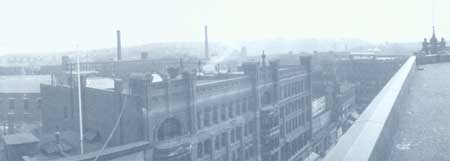 LOWELL MASSACHUSETTS: LIBRARY OF CONGRESS, PRINTS AND PHOTOGRAPHS DIVISION |
The availability of unskilled jobs attracted destitute immigrants. Ten-year-old Peter Quinn arrived from Ireland alone. Escaping poverty and famine he traveled steerage class across the ocean to meet his uncle. Peter, who worked in the mills, attended night school and later became a doctor treating mill workers. John McDonell, a spinner, worked his way to management as a mill agent, leaving the Acre behind for the upper class neighborhood Belvidere.
Lowell become home to other ethnic groups including French Canadians, Greeks, Portuguese, Poles, and Eastern European Jews. Crowded into tenements, entire families often shared one room with no running water. As more and more established Irish moved to neighborhoods away from the Acre, new arrivals moved in.
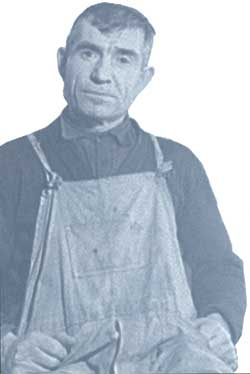 UNIDENTIFIED IMMIGRANT: LIBRARY OF CONGRESS, PRINTS AND PHOTOGRAPHS DIVISION |
The Acre's Greek settlement became known as Greektown or Acre Acropolis. Men like Vasilios Faivis gathered nightly in coffee shops to discuss politics and read the Weekly Telegraphos to keep abreast of events in their native land. Intensely loyal to their homeland, many men returned to Greece temporarily to fight in the Balkan wars. Also loyal to their new home, many of these same men, including Vasilios Theodorakakau, fought for the United States in World War II.
The Great Depression of the 1930s hit Lowell hard, and especially affected residents of the Acre. Textile mills closed and workers suffered from massive layoffs and deteriorating neighborhoods. The destruction of tenements, restaurants, and shops to the urban wrecking ball dramatically changed the face of the Acre as many people, especially Greeks, were forced out...
In the early 1980s Southeast Asians arrived in Lowell seeking freedom. Over one million refugees fled their war-torn countries of Cambodia, Laos, and Vietnam in the late 1970s. A former engineer, Narin Sao escaped through the jungle to Thailand and waited two years in a refugee camp before arriving in Lowell with a cardboard box of belongings. Working on an assembly line by day, he studied English at night. The first thing he placed in his new dwelling was a shrine to his lost family. Buddhists ceremoniously remember their dead. No photographs of his loved ones survived.
Whatever group or time period, Lowell immigrants faced language barriers, joblessness, prejudice, and culture shock. Some had never seen a building larger than their family home or paved roads covered with vehicles. As the layers of time reveal lives of Acre residents, similarities in their struggles to create new opportunities emerge. On a walk through Lowell, faces, restaurants, and churches tell the story of diversity in America.
What tangible resources does the author want you to care more about? There may be several.
What tangible icon does the author use as a focus or vehicle to explore intangible meanings?
What intangible meanings does the essay link to the tangible? There are no wrong answers as the essay coneys different meanings to different readers. What did you see?
SAMPLE ANSWERS
TANGIBLES
The essay encourages readers to care more about the Acre, Lowell,
Massachusetts, generations of immigrants, their life events and
culture.
ICON
This essay uses a place — the Acre — as the primary vehicle to
illuminate a variety of tangible resources and multiple intangible
meanings.
INTANGIBLE MEANINGS MIGHT INCLUDE:
Choices — chances for a better life, but with a cost
Freedom — from violence, poverty, hunger, and religious persecution
Success — many were able to create better lives
The benefits of hard work
Diversity of Lowell
Change over time — multi-generations of immigrants as well as multiple ethnic groups
Prejudice toward the Irish
Shared experiences of immigrant groups
Gentrification of Lowell neighborhoods
|
"CREATIVITY IS NOT THE FINDING OF A THING, BUT THE MAKING SOMETHING OF IT AFTER IT IS FOUND." —James Russell Lowell
|
EXAMPLE 3
Deprivation to Depravation: War-Time Harpers Ferry
Melinda Day, National Park Service
During the American Civil War, day-to-day incidents altered the way people regarded life. Harpers Ferry, Virginia saw the tragic effect war bestows on human nature. Perched on the border of the United and Confederate States, control of the town changed between northern and southern armies nine times.
Living in Harpers Ferry was risky but civilians who wanted to save their property knew it was necessary. Families who stayed were at the mercy of hungry, desperate, tired, scared, wounded, and occasionally hard hearted troops. Some merchants eked out a living and avoided starvation by allowing military strangers to shop their stores.
On July 4, 1864, Thomas Eagan's shop witnessed a tragic death and war's moral degradation. Chewing tobacco, a pungent molasses-tasting stuff, attracted a drunken Union soldier to the store. The soldier took his plug of tobacco but refused to pay. A scuffle ensued resulting in the ejection of the would-be thief.
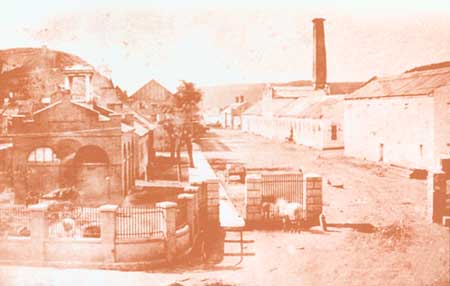 HARPERS FERRY ARMORY: HISTORIC PHOTO COLLECTION, HARPERS FERRY NHP |
Surveying the storeroom, Eagan's daughter, described by locals as an "interesting girl of thirteen," noticed a cap lying on the floor where her father tussled with the soldier. The daughter raised the storeroom window and called after the soldier to retrieve his cap. He pulled out his carbine and shot the girl through the mouth.
Colonel Mulligan of the 23rd Illinois Regiment who happened to be near the store at the time of the murder, had the soldier arrested and ordered a trial. The following day, the murderer escaped and was never seen again.
Nineteenth-century resident and local author, Joseph Barry, remarked, "The mother of the child, a most estimable lady, soon succumbed to her great sorrow and died broken-hearted. The father became dissipated and a wanderer until he lost his mind, and it is supposed that he ended his days in some asylum for the insane.
Peace-time etiquette, manners, and courtesies were easily replaced with war-time insolence, theft, clandestine violence, and the indiscriminate taking of innocent lives. The Eagan girl's murder was not unusual. Other events illustrate this disregard. For one not familiar with war's depravities, it's difficult to comprehend such drastic shifts in human values.
To eyewitnesses who recorded these stories, war cheapened the value of human life. To the young girl's parents, war had not cheapened the value of their daughter's life, it caused her death. To a drunk soldier in July of 1864, a thirteen year-old girl's life was only worth a plug of tobacco.
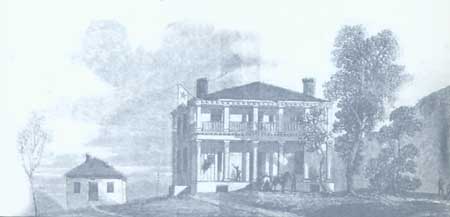 HARPERS FERRY ENGRAVING: LIBRARY OF CONGRESS, PRINTS AND PHOTOGRAPHS DIVISION |
What tangible resources does the author want you to care more about? There may be several.
What tangible icon does the author use as a focus or vehicle to explore intangible meanings?
What intangible meanings does the essay link to the tangible? There are no wrong answers as the essay conveys different meanings to different readers. What did you see?
SAMPLE ANSWERS
TANGIBLES
This essay encourages readers to care more about the Eagan family, the
events described, all people who suffer in war, and the town of Harpers
Ferry.
ICON
This essay uses people — the Eagans — and an
event as the icon. It could be persuasively argued that the main focus
or vehicle for the piece is either the Eagans or the murder of the girl.
The primary icon in this case is academic as the event and the Eagans
are inextricably connected. What is important interpretively is the
murder, and the Eagans as icons that link several tangible resources and
a multitude of intangible meanings.
INTANGIBLE MEANINGS INCLUDE, AMONG OTHERS
Depravation — what drives humans to care so little for human life?
Survival — how does one conduct normal life in the midst of war?
Economics
Murder
Horror of war — not just soldiers die
Grief
Injustice
|
"THE PAST BECOMES A THING MADE PALPABLE IN THE MONUMENTS, BUILDINGS, HISTORICAL SITES, MUSEUMS, ATTICS, OLD TRUNKS, RELICS OF A HUNDRED KINDS; AND IN THE LEGENDS OF GRANDFATHERS AND GREAT-GRANDFATHERS; AND IN THE INCISED MARBLE AND GRANITE AND WEATHERED WOOD OF GRAVEYARDS; AND IN THE MURMURING OF GHOSTS." —Wallace Stegner
|
EXAMPLE 4
Season of the Dogsled
John Morris, National Park Service
Each year, as the dog mushing season comes to a close, thousands of enthusiasts celebrate the success of a true Alaska tradition. Certainly, as any Iditarod race veteran will tell you, there are no losers with dog teams. Just being in the race is a measure of success. Win or lose, the dogsled and the team pulling it symbolize how simplicity and teamwork characterize life in the Alaskan wilderness.

Sliding across the frozen landscape behind a sled-dog team evokes a pristine image of life on the last frontier. This historic transport is simplicity in motion. Imagine living deep in the winter wilderness totally removed from the trappings of complicated technologies. Your vehicle, made from the natural materials around you, is easy to maintain and repair. Your canine partners don't require fossil fuels, just food and encouragement. Together, you travel along in peaceful quiet; nothing but the sound of breathing and the padding of feet in snow disturb the air or marks your passing. They happily sustain you in a lifestyle rich in natural tradition.
Comfort is also afforded by the knowledge that each member of the team has a unique but interconnected role in your mutual survival. The wheel dogs, just in front of the sled, possess skill and strength, and control the team's collective power, keeping the team from jerking the sled out of control. The lead dogs keep the team fully extended, responding to your commands and assuring the team stays on the right trail. Every other dog in the team pulls in unison to maintain a smooth, harmonious rhythm.
And the dogsled itself, in its simple craftsmanship is flexible, yet sturdy as it accommodates whatever trail conditions come along. Weariness, injuries, changes in weather, changes in direction are carefully managed under your watchful eye, keeping the group safe and well prepared for each new challenge. To be effective, each part of the team must cooperate. To be successful, they must be in tune.
Life in the Alaskan wilderness sings with the beauty of simplicity. Warmth, strength, health, and a significant place within the community make life succeed. The dogsled, together with the team that pulls it, is a reminder that when roles are honored, it won't matter if other teams are in front or behind. The race is won.
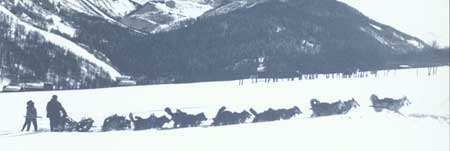 SLED DOGS TRAINING: LIBRARY OF CONGRESS, PRINTS AND PHOTOGRAPHS DIVISION |
What tangible resources does the author want you to care more about? There may be several.
What tangible icon does the author use as a focus or vehicle to explore intangible meanings?
What intangible meanings does the essay link to the tangible? There are no wrong answers as the essay conveys different meanings to different readers. What did you see?
SAMPLE ANSWERS
TANGIBLES
The writer wants readers to care more about dogsledding, dogs, the Alaskan wilderness, and perhaps, by association, all wilderness.
ICON
Season of the Dogsled uses dogsledding to introduce other
tangible resources and intangible meanings. Dogsledding can also be
described as a traditional, cultural, or craft-based activity. Hunting,
blacksmithing, sports, horse competitions, fishing, and rug weaving are
similar examples. They are tangible events that link to meanings.
INTANGIBLE MEANINGS MIGHT INCLUDE:
Teamwork — the sled and dogs are a metaphor for applying principles of teamwork in all of life
Solitude
Wilderness as valuable
Simplicity — what life is like stripped of modern technologies
Self-reliance
The value of tradition and lifestyle
The value of beauty
|
"I BELIEVE IN A GENERAL DUALISM BETWEEN FACTS AND THE IDEAS OF THOSE FACTS IN HUMAN HEADS." —George Santayana
|
| EXERCISE |

Use the tangible object you specified on Page 91 or select another tangible object from your place. Brainstorm a list of intangible meanings to which your object links. Ask yourself "What can I talk about with this object?" If your intangible meanings list is short, do additional research and increase your knowledge of the resource. Also, ask others what meanings they connect to your tangible. |
| <<< Previous | <<< Contents>>> | Next >>> |
meaningful_interpretation/mi6h.htm
Last Updated: 29-May-2008
Meaningful Interpretation
©2003, Eastern National
All rights reserved by Eastern National. Material from this electronic edition published by Eastern National may not be reproduced in any manner without the written consent of Eastern National.